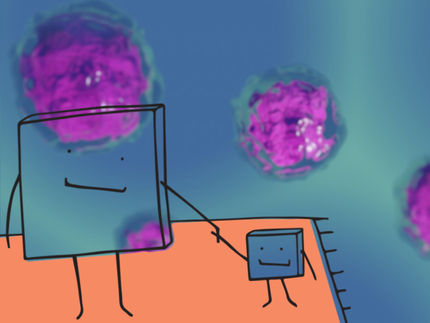Study shows link between influenza virus and fever
Scientists solve riddle of new mechanism in immune system
Advertisement
viruses are microscopically sized parasites. They plant their genes in the cells of their victim in order to 'reprogram' them. The infected cells then no longer produce what they need to live, making lots of new viruses instead.
Luckily, in most cases this hostile takeover does not go unnoticed. This is ensured by the cells' own sensors that recognise alien genetic material. One of them is RIG-I. When RIG-I encounters virus genes, it ensures that the body releases interferon. The interferon then in turn puts killer cells on combat standby, which then destroy the infected cells.
Yet this is only part of the truth. 'According to our results RIG-I appears to play a far more prominent role in the defense against viruses than was previously thought,' Dr. Jürgen Ruland from the University Hospital Rechts der Isar at the Technical University of Munich explains. As a result, many virus infections are accompanied by a high temperature. That is also what happens with influenza, for example. This symptom cannot be explained by interferon release alone.
In most cases it is cytokines which trigger the fever. 'We have now been able to show, for the first time, that RIG-I also cranks up the production of a central cytokine in the case of a virus infection,' Dr. Hendrik Poeck explains. He and his colleagues Dr. Michael Bscheider and Dr. Olaf Groß are the primary authors of the study. This is a reference to interleukin 1, probably the most important cytokine known today.
When RIG-I comes into contact with a virus gene, it does two things. On the one hand, it ensures that certain immune cells produce pro-interleukin, the precursor of interleukin 1, en masse. At the same time it activates an enzyme via a complicated signaling pathway which transforms pro-interleukin into interleukin 1. 'This interleukin 1 then ensures that the typical symptoms of a virus infection such as fever or shivering occur,' Professor Veit Hornung from the Bonn University Clinic explains.
As yet the researchers do not know how important this newly discovered immune mechanism is for the successful defense against the virus. The release of interleukin may also have negative consequences. 'There is the hypothesis that an overproduction of cytokines may lead to extremely severe courses of virus diseases,' Professor Gunther Hartmann says. Medicines that prevent such a 'cytokine storm' may therefore alleviate the progress of the disease.
Original publication: Hendrik Poeck, Michael Bscheider, Olaf Gross, Katrin Finger, Susanne Roth, Manuele Rebsamen, Nicole Hannesschläger, Martin Schlee, Simon Rothenfusser, Winfried Barchet, Hiroki Kato, Shizuo Akira, Satoshi Inoue, Stefan Endres, Christian Peschel, Gunther Hartmann, Veit Hornung & Jürgen Ruland; "Recognition of RNA virus by RIG-I results in activation of CARD9 and inflammasome signaling for interleukin 1beta production."; Nature Immunology 2009.
























































